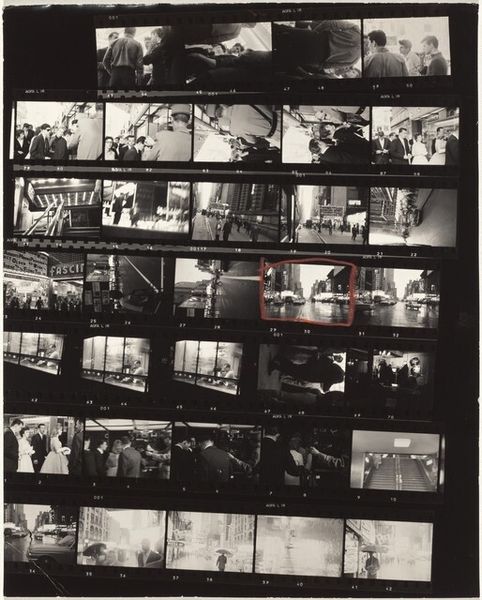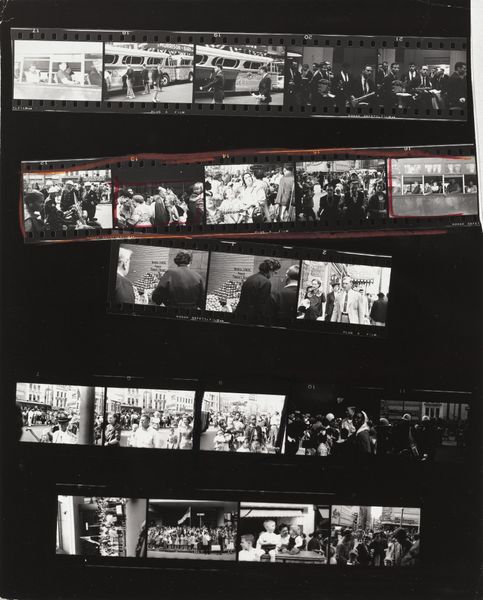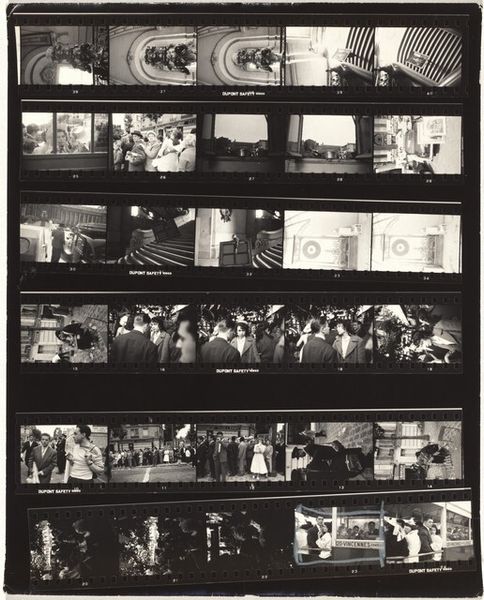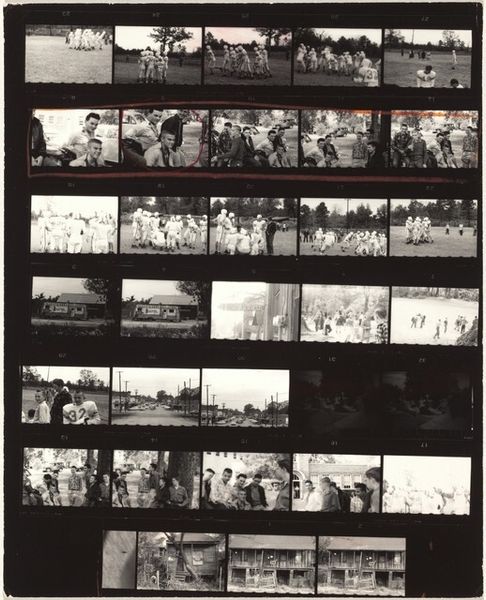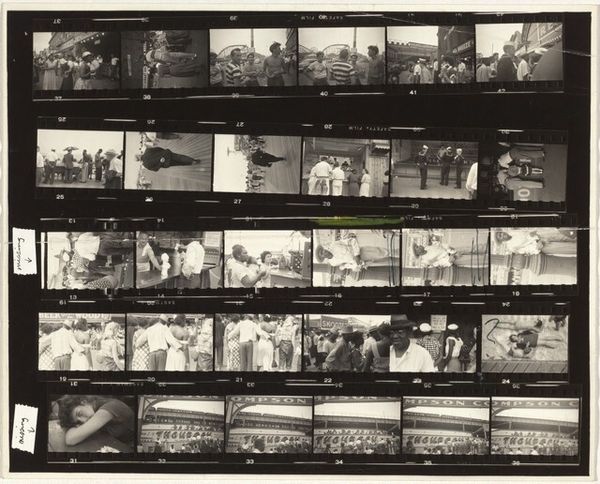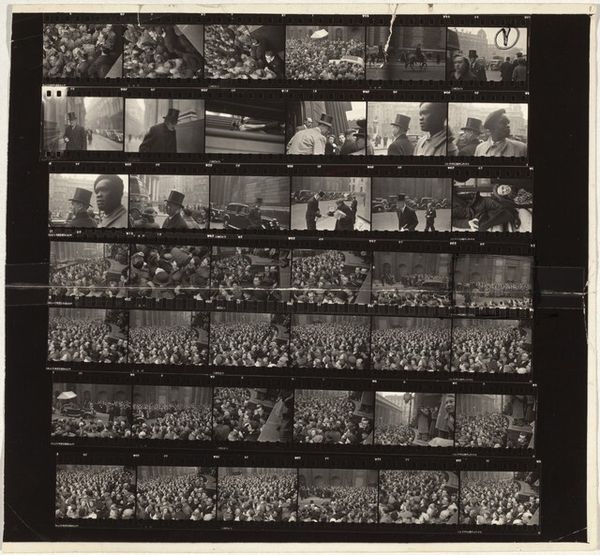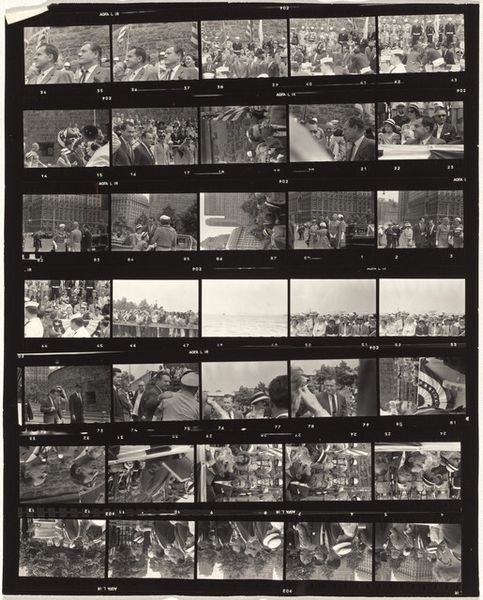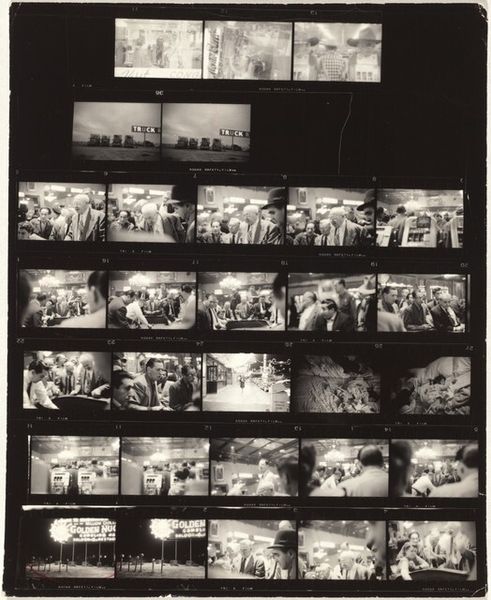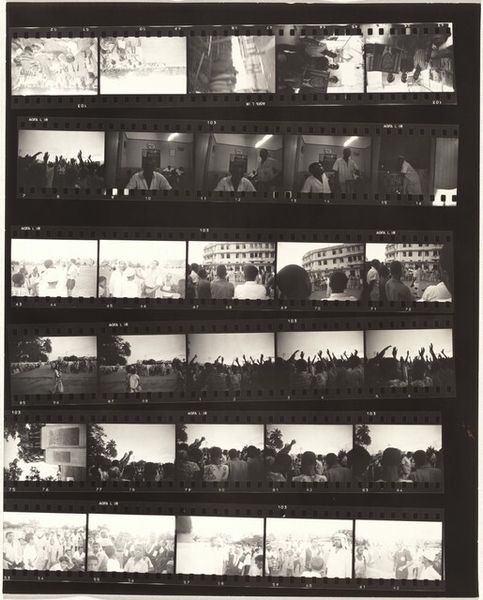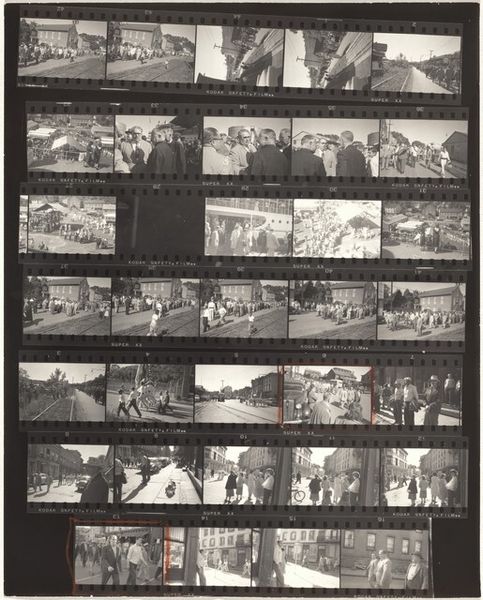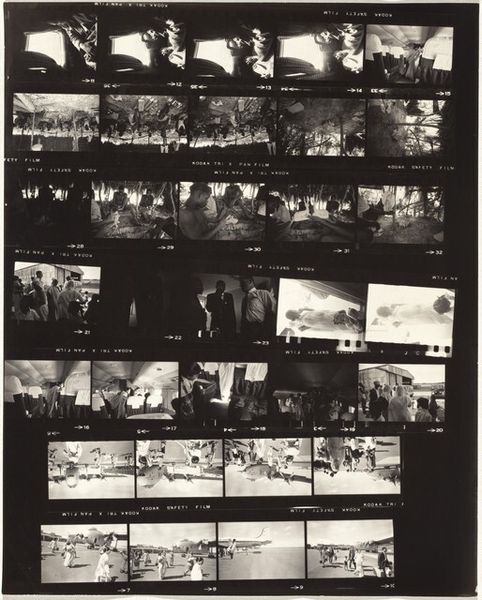
Dimensions: overall: 25.2 x 20.2 cm (9 15/16 x 7 15/16 in.)
Copyright: National Gallery of Art: CC0 1.0
Curator: We're looking at Robert Frank's "Guggenheim 712--Rodeo, Casper, Wyoming," a gelatin-silver print from 1956. Editor: It feels like a fragmented memory, a series of vignettes capturing moments just before or after the central event. It certainly carries a tone of subdued anticipation, maybe even a slight melancholy. Curator: The contact sheet format presents an interesting challenge to the viewer. Rather than a single, decisive moment, we're presented with a sequence, inviting a comparative analysis of each frame's composition and light. Editor: Indeed, that sequencing emphasizes the social dynamics. Looking at this series of moments – the spectators, the cowboys, the empty arena – one can start to investigate themes of American identity, labor, and spectacle. The stark black and white contributes to the hardscrabble feel of the image, which lends the work an undeniable sense of realism and authenticity. Curator: There is a noticeable attention to form. Notice how Frank plays with light and shadow in each frame, creating varying degrees of contrast that draw the eye across the entire sheet. Each miniature composition reflects and refracts those of its neighbors. Editor: I appreciate Frank’s method. Consider his Swiss roots set against the backdrop of post-war America. What narratives are consciously or unconsciously revealed through his outsider’s lens? It also strikes me that the composition of the shots implies a deeper commentary on societal divisions. Notice how the crowds seem homogeneous, perhaps highlighting racial and economic disparities present in Wyoming at that time. Curator: Precisely. He gives us this seemingly candid, street photography feel but everything is perfectly rendered within his compositions. It provides viewers with a wealth of entry points into a relatively complex analysis. Editor: Absolutely. Considering the work's title alongside these various thematic elements deepens my appreciation for its layered nature. It highlights an important intersection where private narratives and historical context meet. Curator: For me, the overall effect lies in Frank's ability to make us reconsider not only his chosen subjects but the medium of photography and the art of visual narrative itself. Editor: And for me, understanding the socio-political conditions of the time is what brings this work into focus; it provides a necessary foundation to the formal brilliance we both acknowledge here.
Comments
No comments
Be the first to comment and join the conversation on the ultimate creative platform.
